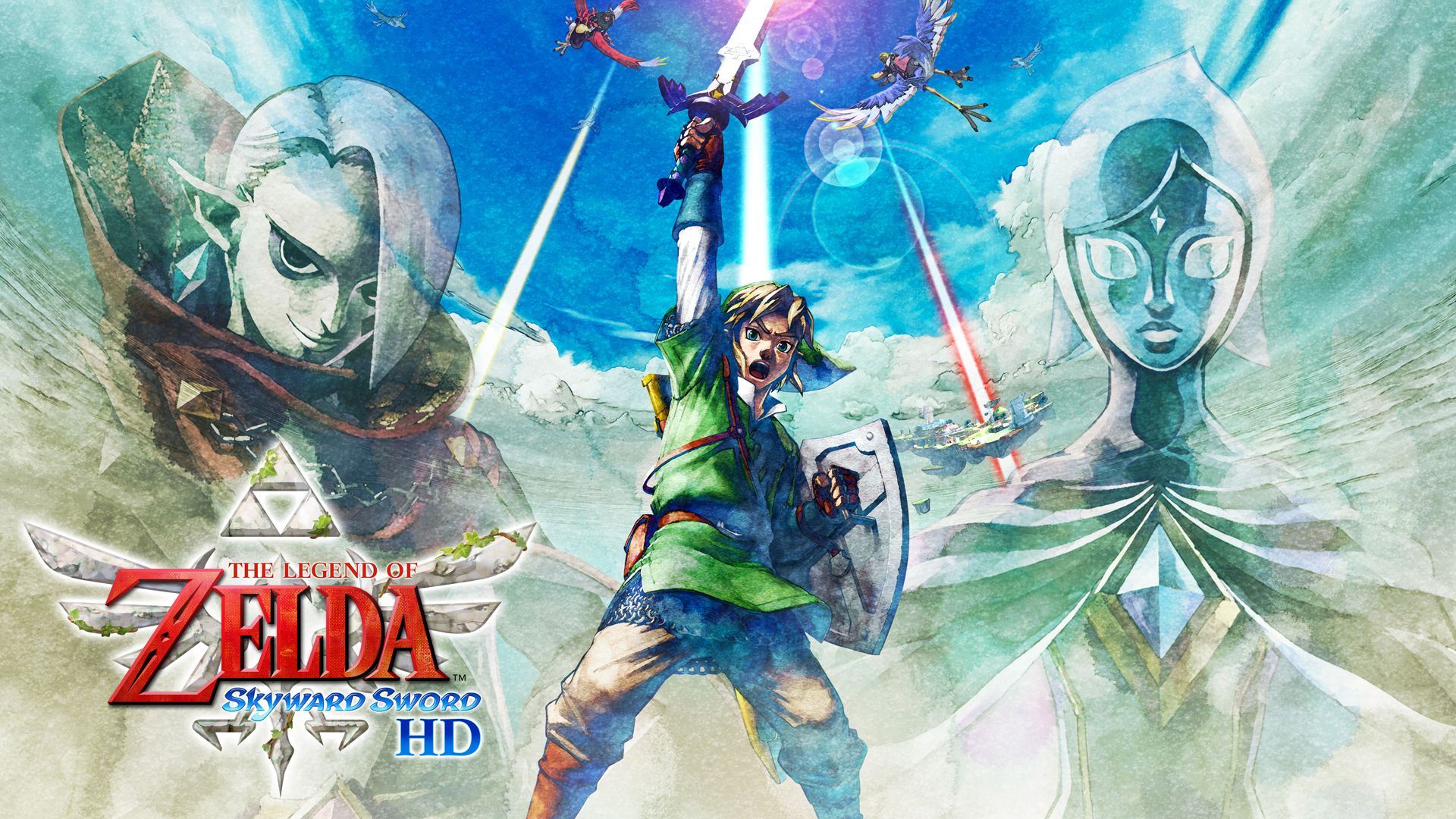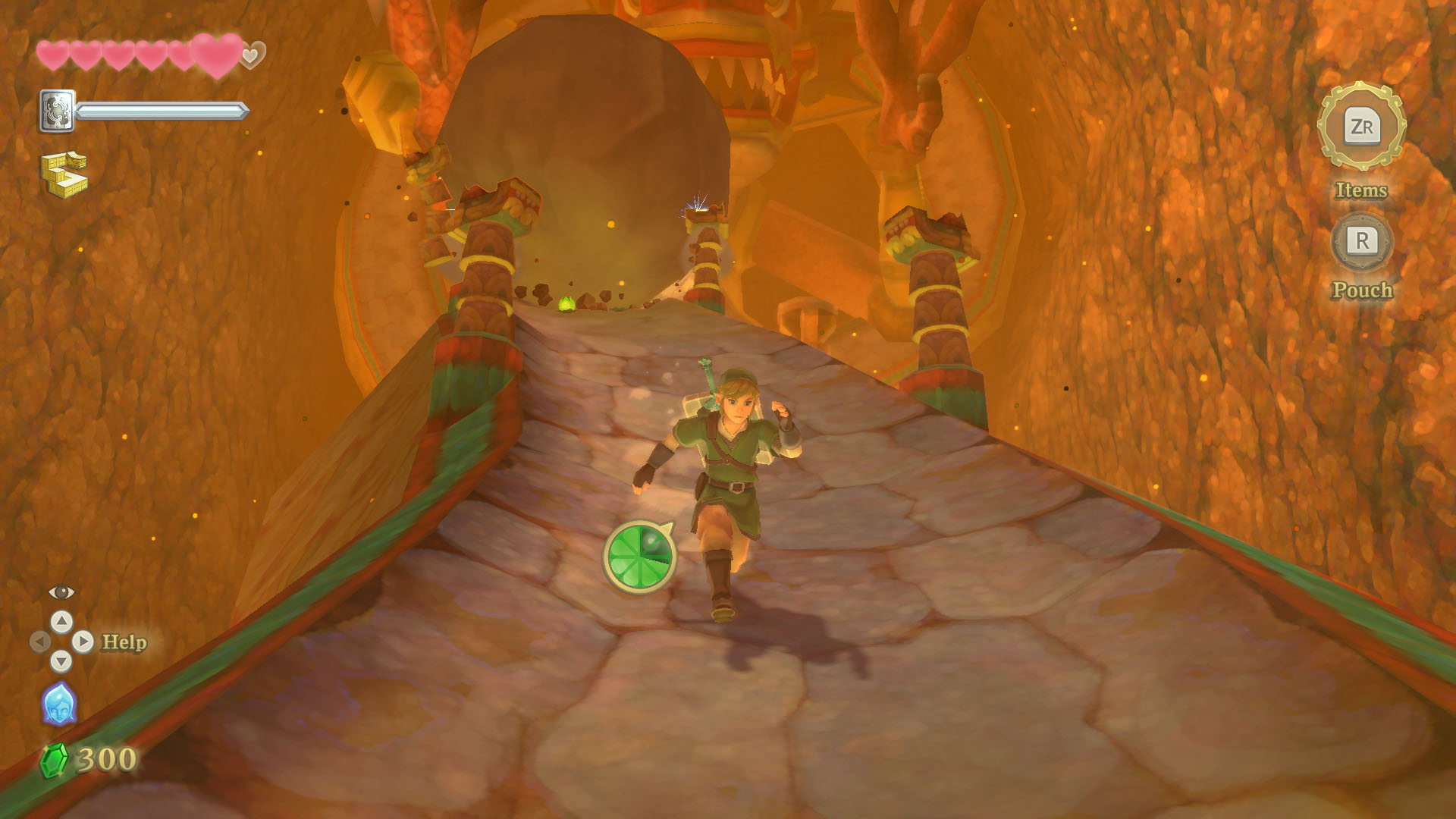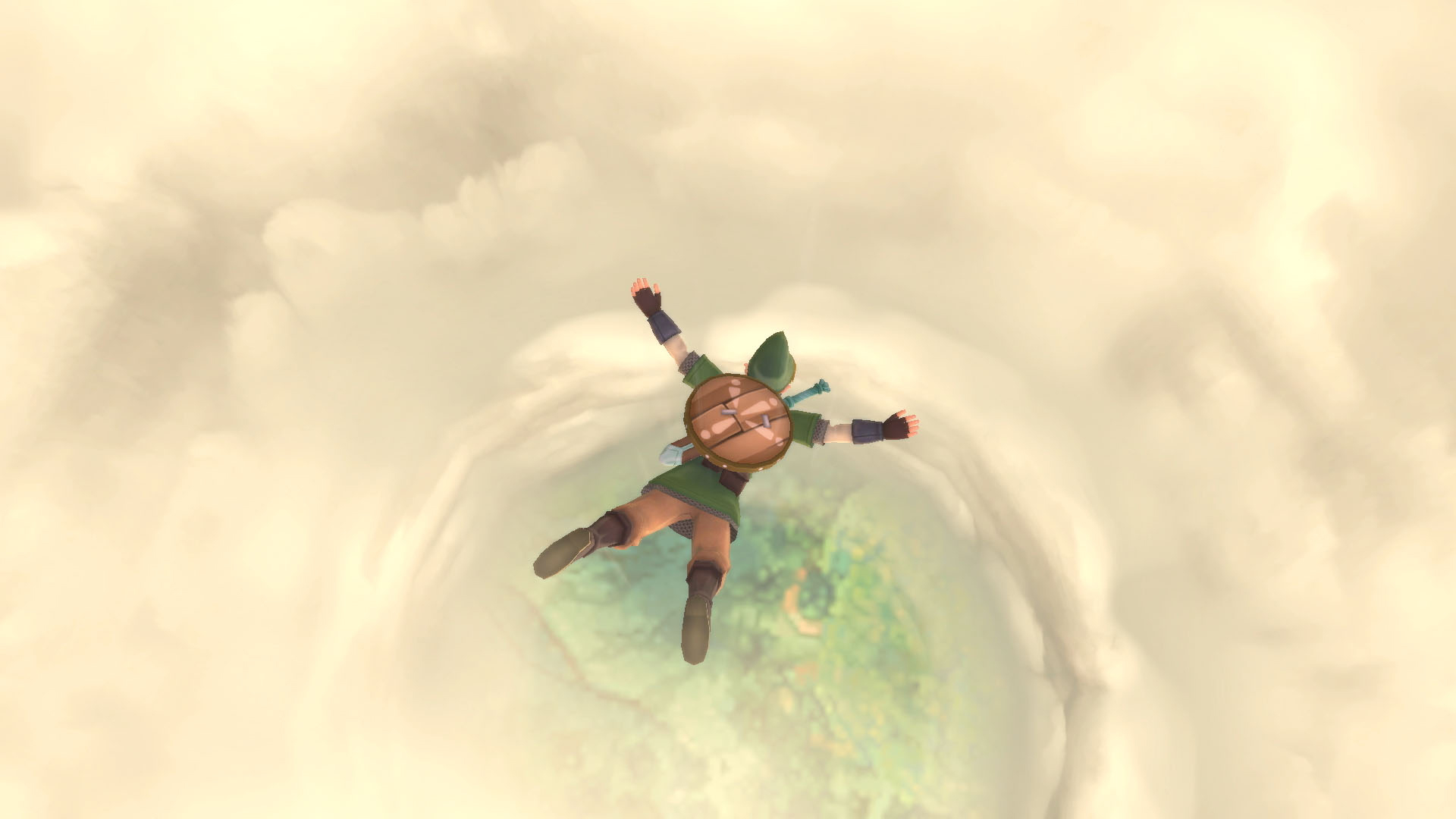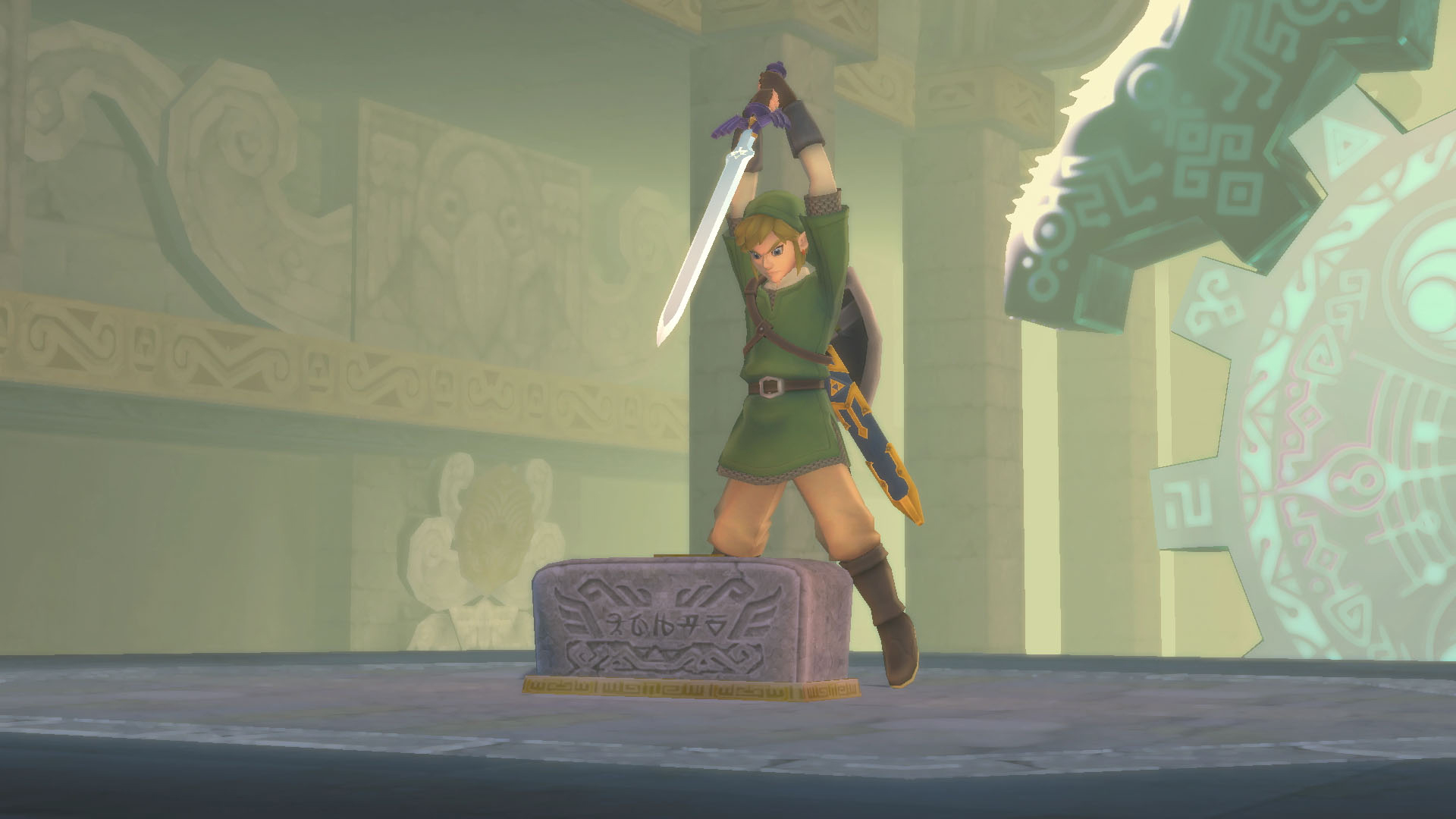GamesRadar+ Verdict
The Legend of Zelda: Skyward Sword HD is an adventure worth taking, a chance to reevaluate one of the largest and most experimental games in the series' history.
Pros
- +
Plays fantastically with standard controls
- +
Incredible dungeon design
- +
Inventive boss battles
Cons
- -
Pacing and padding issues
- -
Camera can be finicky
- -
Some elements have aged poorly
Why you can trust GamesRadar+
Link spends most of The Legend of Zelda: Skyward Sword HD looking a little ridiculous. Sprinting breathlessly from one sprawling settlement to the next, the Goddess Sword held awkwardly aloft by an extended arm that refuses to lower. It's a visual distraction, one born out of Nintendo's decision to set motion controls aside in this Switch remaster. While it does mean that Link resembles a kid who is expressly warned never to run with scissors, and is doing so anyway in gleeful defiance, it's but a small price to pay for precise input and action.
When this ambitious adventure first launched for Nintendo Wii in 2011, we were promised an experiment in theatricality. GameCube's Wind Waker and Twilight Princess let us recount grand adventures as if we were flipping through them in a painterly picture book, but Skyward Sword would let us live this journey for ourselves. The Wii Remote would register every flick of the wrist and MotionPlus would translate it into nuanced action – play-acting as we had never experienced it before. The results were divisive. Nintendo may have given us a stage to perform on, but the technology wasn't ready to bring its vision to life.

A decade later, Legend of Zelda: Skyward Sword finally feels right between the fingertips. Perhaps Nintendo should never have allowed freedom to outweigh function, although that's an easier balance to find with a little time and perspective. Skyward Sword is certainly less theatrical in its HD incarnation, though it's no less experimental. Where wild swipes of the hand were once crudely translated into diagonal, horizontal, and vertical attacks, reflected back at you at just 30fps and 420p, Skyward Sword HD allows would-be Heroes of Time to exert a greater degree of control over their swings.
Slashes of the sword can be mapped to the right-thumbstick – nine points of interaction rendered at a stable 60fps. It's surprising how well this input works now too, given how essential motion controls were to the fundamental design principles of the original; The Legend of Zelda typically sequesters its action behind a single button, but Skyward Sword HD makes small precision puzzles out of every one of its encounters. A Chuchu must be methodically dissected to stop it from reforming. Attacking a Deku Baba requires surgical cuts across multiple axes to split its maddening maw in two. The Lizalfos must be carefully maneuvered should you want to get a hit in beyond their shifting defenses. These principles remain in Skyward Sword HD, although combat feels more rewarding now that you can confidently and reliably execute attacks without technology limitations getting in the way of a good time.
Taking control


Release date: July 16, 2021
Platform: Nintendo Switch
Developer / Publisher: Nintendo
By removing the panicked wailing of the Wii Remote from proceedings, Skyward Sword HD frees you up to grapple with the true extent of Link's motions. Breath of the Wild may have undoubtedly put a greater focus on combat than any Legend of Zelda before it, but there's something about the experimental nature of Skyward Sword HD's swordsmanship that really resonates – particularly when you factor in some of the game's truly fantastic boss battles. Interestingly, it feels like Link is becoming more adept as a hero the longer you invest in the experience, not because he's gaining access to new moves, but because of your capacity to better read enemy defenses and respond to them accordingly.
It's a shame that this air of increasing agility and competency doesn't extend to other systems. Skyward Sword was a radical departure in many ways and some of its elements have aged better than others as a result. The stamina bar that governs sprinting, climbing, and dashing feels needlessly restrictive throughout, particularly as there's no real way to improve it, making exploration feel more of a chore the further you push into the adventure. It's no surprise that Nintendo refined this system entirely, and the otherwise perfunctory sailcloth, for Breath of the Wild.
In handheld mode, the camera is also a point of contention. Free-aim has been introduced and mapped to L+right-thumbstick but it feels cumbersome to use in practice, particularly in combat. It means you're back to wielding the camera as we did in 2011, teasing Link in the direction you want him to face before making constant camera adjustments with ZL – that's the cost of having the sword mapped to a thumbstick. Unrestricted free-aim is available, and wonderful, should you unsheathe the JoyCons, but the fundamentals of motion control haven't improved enough to make the trade-off worth it.
Thankfully, navigating the interface is also far more comfortable in this remaster. Where maneuvering through menus, selecting dialogue options, rummaging in adventure pouches, or utilizing items would once have put further strain on your arm, it's now handled with the sticks and buttons. Projectile weapons – like the Bow or Beetle – can be wielded with gyroscope aiming although this can be turned off in the menu, making some of the precise, time-sensitive aiming necessitated by the end-game dungeons a little easier to manage. Some of the neat tricks Skyward Sword pulled back in 2011 still exist in this iteration too, such as your ability to throw bombs overhead or underarm, which you can now do with precise movement of the sticks and without fear of throwing your back out – Skyward Sword isn't the only thing that's 10 years older now.
Leap of faith

If there's any one element of Skyward Sword that's most in need of reevaluation, it's the structure of the adventure. Criticism that existed in 2011 is still relevant today, of course: Skyward Sword has problems with pacing, as you'd expect from a game that pushes 35 hours (and that's without factoring in the hunt for collectibles, side quests, and finding resources for upgrades that are as useless today as they were then). But Skyward Sword hits differently in 2021, following the open-ended nature of Breath of the Wild.
You could call Skyward Sword HD the most linear of the 3D Zelda games, but perhaps a more apt term would be 'authored'. Just as the Goddess outlined the path for Link's adventure a millennia ago, Nintendo has ensured that every player will experience the highs and lows of this rollercoaster together. It's rare for Skyward Sword HD to stay on any one track for more than a few hours, constantly breaking established conventions and finding new ways to play with expectation. Spend an evening with Skyward Sword HD and you can expect to be doing everything from transitioning across time boundaries to chasing ships at sea, racing mine-carts to slashing at foes in a pirate stronghold. It's a wild ride.
This is partly down to Skyward Sword HD's peerless dungeon design. If this remaster does anything, it makes it clear that Skyward Sword features some of the smartest – and largest – structured play spaces in the series' history. This isn't a case of Breath of the Wild and absence making the heart grow fonder, either. Its dungeons are easier to appreciate now, presented in greater fidelity, and with countless quality of life improvements that both improve the flow of play and reduce points of artificial friction in the original design. Three self-contained, themed regions make up the core of The Surface – forest, volcano, and desert worlds – and each has its own quirks and challenges build-in, pushing Link to cycle through items and multi-task equipment with a startling regularity as he pushes deeper into truly epic staging areas.
You never know what you'll find in the labyrinthian dungeons. Temples transition between environment types and time-zones with abandon, combat sections weave seamlessly into puzzle areas, and the series' iconic 'escape the locked room' ethos is twisted to great effect. If you get really stuck, Fi is still on hand to help if you need it, although she's less prone to interruptions now – thankfully. Trying to figure out what items in your eclectic toolbox can help you out in any given situation is half the fun of Skyward Sword's dungeons, logic puzzles that capture the imagination and full suite of Link's abilities.
Reevaluating the past

Skyward Sword HD gives one of the most misunderstood Legend of Zelda games a second chance. It's an under-appreciated gem, one that finds the space to really breathe with a more reliable and relaxing method of control embedded within it. Skyward Sword has its fair share of problems, but it makes up for many of them in moments of true brilliance and defiance against established series conventions. Say what you will about Skyward Sword, but it's good to be out on an authored adventure with Link again – saving Hyrule one inventive dungeon and challenging boss battle at a time.
Reviewed on original Nintendo Switch with code provided by the publisher

Josh West is the Editor-in-Chief of GamesRadar+. He has over 15 years experience in online and print journalism, and holds a BA (Hons) in Journalism and Feature Writing. Prior to starting his current position, Josh has served as GR+'s Features Editor and Deputy Editor of games™ magazine, and has freelanced for numerous publications including 3D Artist, Edge magazine, iCreate, Metal Hammer, Play, Retro Gamer, and SFX. Additionally, he has appeared on the BBC and ITV to provide expert comment, written for Scholastic books, edited a book for Hachette, and worked as the Assistant Producer of the Future Games Show. In his spare time, Josh likes to play bass guitar and video games. Years ago, he was in a few movies and TV shows that you've definitely seen but will never be able to spot him in.



